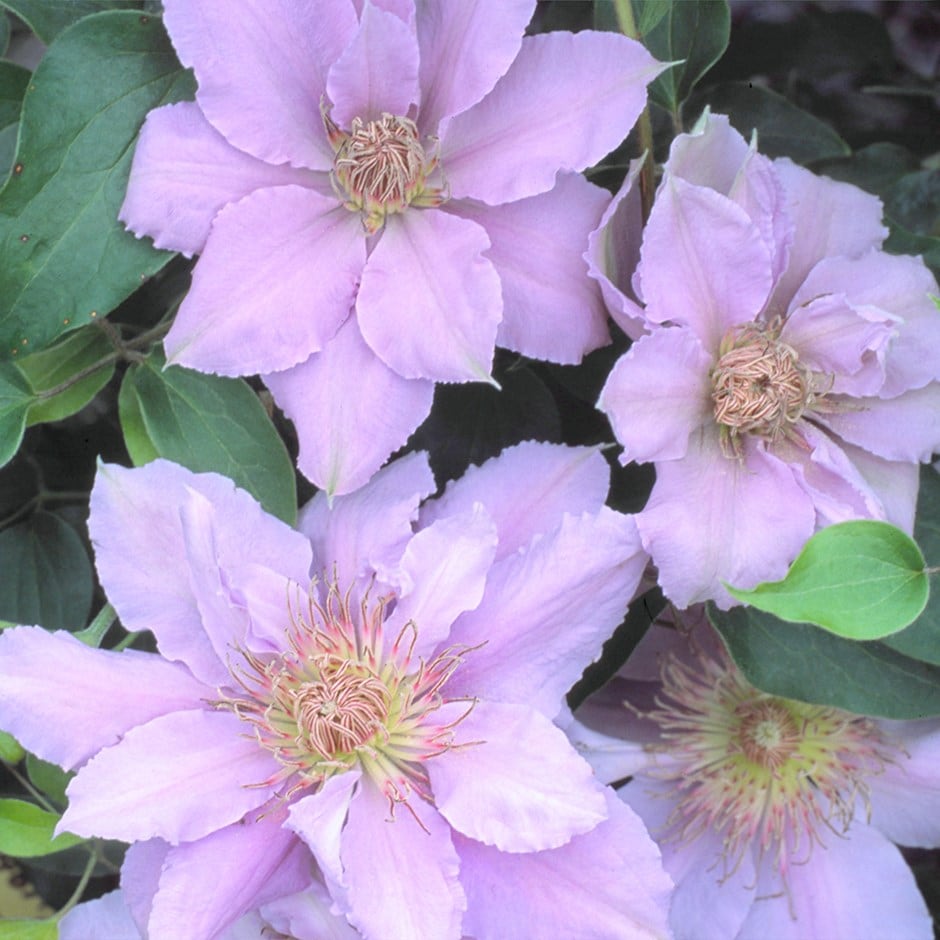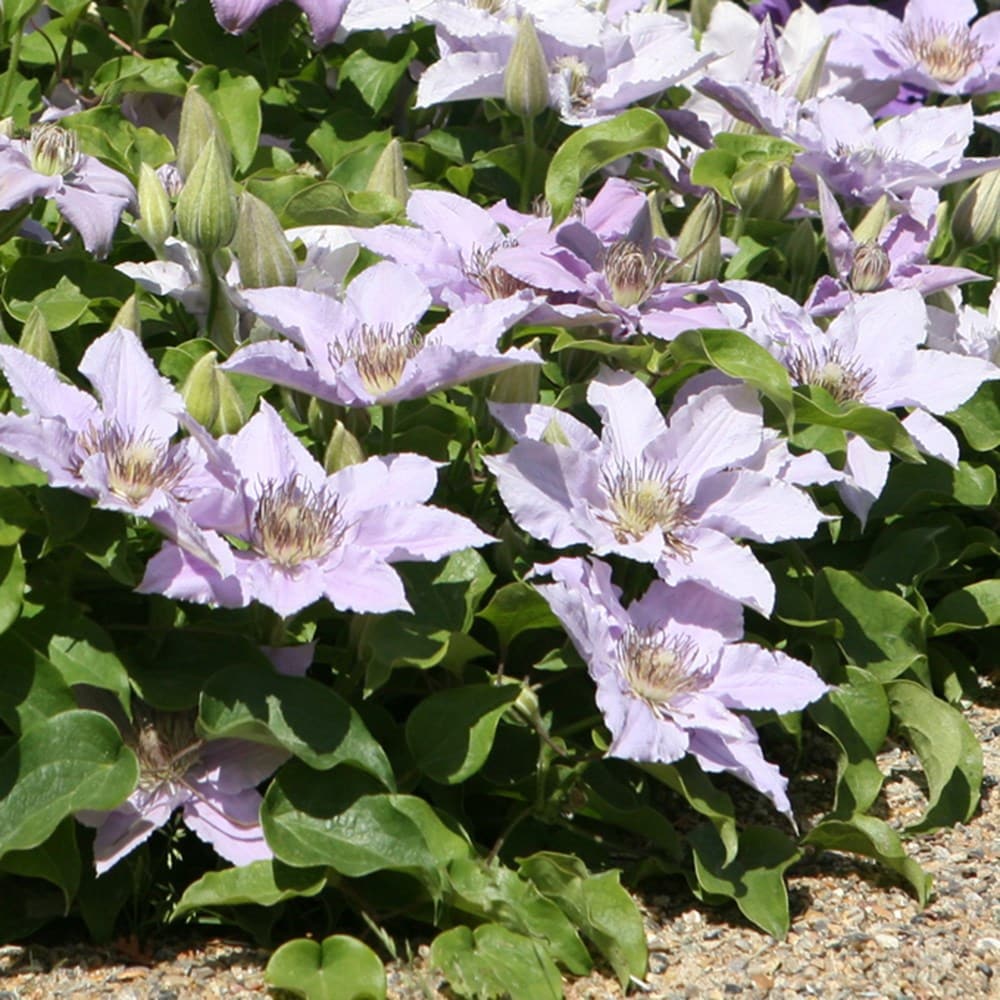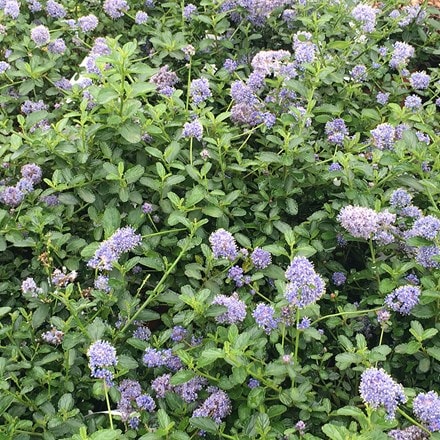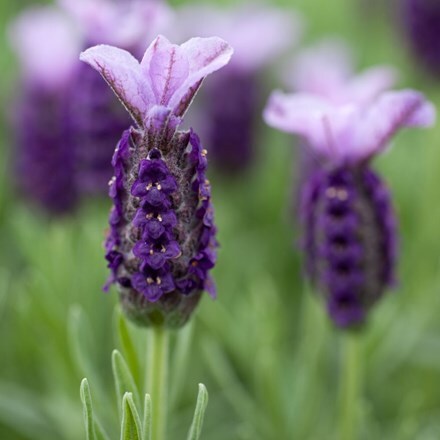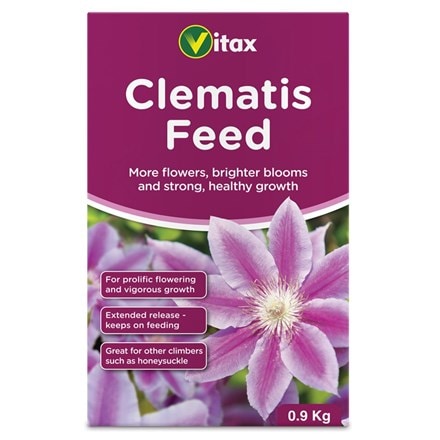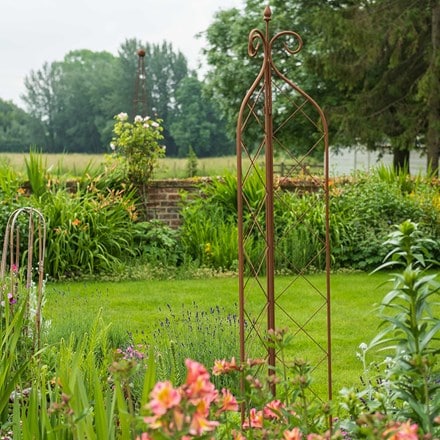Eventual height & spread
Clematis Filigree ('Evipo029') (PBR) (Tudor Patio Series)
clematis (group 2)
- 3 litre pot | 60cm cane
- £32.95
- In stock (shipped within 2-3 working days)
Delivery options
- Standard £5.99
- Position: full sun or partial shade
- Soil: moderately fertile, moist but well drained soil
- Rate of growth: average to fast
- Flowering period: May to July and September
- Hardiness: fully hardy
The first flush of flowers on this extremely compact clematis will often have more that a single row of petals surrounding the filigree-like eye, and as they appear in such abundance, they put on an impressive show for such diminutive plants. The second flush of flowers do tend to be singles (ie. with just one circle of petals), but their pale pink colouring looks almost luminous against the backdrop of green - particularly in the early evening. 'Filigree' is perfect for the patio - or the front of the border.
To avoid dry conditions, and to ensure good soil contact around the rootball, we advise planting climbers at least 30cm (12in), and preferably 45-60cm (18-24in) away from the base of a wall or fence. An even larger distance should be maintained when planting climbers beside an existing tree or shrub.
Clematis are happiest when their roots are kept cool and moist, so try to plant them where the base of the plants will be lightly shaded by other, lower-growing species. Otherwise, use a clematis root protector, or top-dress the rootball (avoiding the immediate crown), with a generous layer of shingle or pebbles.
Remove dead and damaged stems before growth begins in early spring, cutting all remaining stems back to where strong buds are visible.
Apply a slow-release balanced fertiliser and a mulch of well-rotted garden compost around the base of the plant - again avoiding the immediate crown.
Clematis are happiest when their roots are kept cool and moist, so try to plant them where the base of the plants will be lightly shaded by other, lower-growing species. Otherwise, use a clematis root protector, or top-dress the rootball (avoiding the immediate crown), with a generous layer of shingle or pebbles.
Remove dead and damaged stems before growth begins in early spring, cutting all remaining stems back to where strong buds are visible.
Apply a slow-release balanced fertiliser and a mulch of well-rotted garden compost around the base of the plant - again avoiding the immediate crown.
- Humans: Skin irritant; Pets: Harmful if eaten
Goes well with
Lavandula stoechas subsp. stoechas Lilac Wings ('Prolil') (PBR)
9cm pot
£7.99
In stock (shipped within 2-3 working days)
Folding lattice plant support - rust
W40cm × H180cm
£56.99
In stock (shipped within 2-3 working days)
